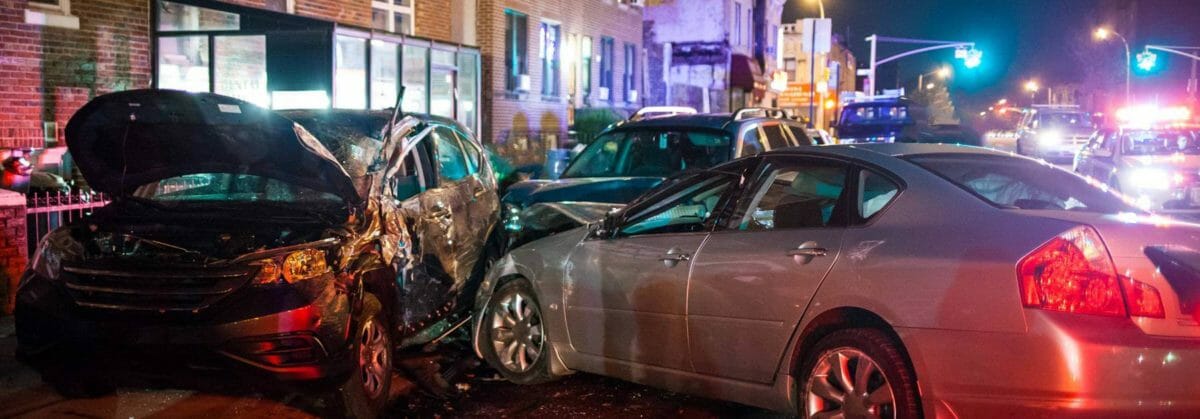Article by John Tucker
There is a narrative we hold near and dear in America: Progress makes life better. In a blink of the proverbial eye, technology has created a world that is more connected and convenient than ever before. For the most part, we’re healthier, safer, and smarter.
Yes, as Dylan says, “The times, they are a-changin’.”
But let us not also forget the Paula-Abdulian law of progress: For every two steps forward comes one step back.
For all their virtues, emerging technologies bring with them their own challenges. Innovation opens the door to both improvement and peril. I submit that we’re seeing a bit of both on the highway horizon.
Maybe it’s strange to talk about next-generation technology in the context of rubber and asphalt, which seem so thoroughly old school. Futurism is ordinarily a discourse about “the information superhighway,” not actual highways.
But our tried-and-true roadways are changing — all across the U.S. and around the world. Some of those changes are technology-driven. Others are cultural in nature. Most of them are making the commuter’s life easier, cheaper, faster, and more fun. Some of them are just flat-out Back to the Future-ish cool.
Are we really ready for them, though? After all, ours is a society that hasn’t quite gotten the hang of traditional driving just yet. Auto accidents remain a leading cause of catastrophic injury and death, the overwhelming majority of them the result of purely preventable negligence.
But the question warrants sober consideration. Our best chance for success in a new frontier is a clear understanding of what awaits us there.
In that light, let’s take a look at a few of the fast-emerging innovations and trends in transportation — their promises, their risks, and the extent to which they can be governed by existing law.
Uber: The Taxi of Tomorrowland
Taxis have persisted as mainstays for decades, relatively unfazed by advents in technology. Then, more than a decade into the app era, a single platform comes along and changes everything: Uber.
“Ride sharing,” as it’s called, is conceptually different from taxis — Uber drivers are just nonprofessionals giving each other a lift for a modest gratuity, or at least that’s the idea — but it fulfills the same basic need. People have places to be and Uber gets them there, often more easily and at a cheaper fare than taxis could.
But while Uber is all the rage in big cities everywhere, in the courtroom, ride sharing is still the Wild, Wild West. The law has never been known for keeping pace with change, and we’re only now seeing the very, very early stages of litigation and regulation with respect to ride sharing.
Municipalities are trying their best to weigh in with a heavy hand — an effort to not only preserve the all-important taxi market but also cash in with a piece of the pie (“pie sharing,” we might call it). Some have been more successful than others. Uber has a powerful ally: the people. They love it, and that’s sure to make it an unpopular target for anyone whose paycheck depends on a ballot box.
Who’s to say Uber needs a crackdown, though? Maybe it’s too soon to tell. As a personal injury attorney in New York City, my concern is simply about safety. If we have a lot of amateur drivers spending even more time on the roads, jetting between points A, B, and C, are we likely to see a net increase in accidents?
If so, who’s liable for that damage? Uber does actually provide some limited coverage for its drivers (for now), but it isn’t enough to cover catastrophe. Outside of that, they insist the driver’s own insurer is on the hook. After all, Uber is neither the vehicle owner nor the driver. That’s what separates them from a conventional cab company. But then again, Uber does provide the service and share in the profit.
So whose pocket does the paying? That’s for the courts and/or legislatures to decide. And they will decide. So perhaps the Uber challenge is an easily surmountable one, given enough time for the law to work out all the kinks.
Other innovations aren’t so easily addressed.
Smartphones Still a Problem
Legal voids are easier to fill than cultural vices are to cure. So while the law can hopefully evolve to make ride sharing at least as safe and reliable as taxis, there isn’t as much that a legislature can do to change hearts and minds.
Maybe most drivers can concede that other people’s texting is a problem. But the self-perception of invincibility leads many to conclude that they are able to safely use smartphones behind the wheel. No one really can, of course, but that myth is a powerful one.
To be clear: Distracted driving is getting worse, not better. Mobile adoption continues to rapidly proliferate. Each passing year sees an increasingly larger portion of the public using a mobile device as their primary means of accessing the Internet.
If those trends continue, we’re likely to see the threat of distracted driving grow along with them.
kpalan
Like smoking in previous generations, texting while driving has quietly become a tacitly accepted vice. The culture has bought into it as an allowable risk — a kind of guilty pleasure that one embraces but maybe doesn’t admit.
Of course, the consequences of that attitude are deadly. That “intextication” claims lives is absolute fact. It is one of the most dangerous mainstream practices in the modern world, and yet, despite aggressive awareness campaigns in recent years, it has proven relatively unshakeable.
This is of grave concern. We all use the roads, and so this is a peril common to everyone. And how do we fix it? Criminal prohibitions and highway patrol can help, but a meaningful solution to the intextication problem remains elusive.
Drivers? Where We’re Going, We Don’t Need Drivers.
The general consensus on self-driving cars is that they are catastrophes in the making. At the risk of sounding like an orthodox old-timer, I’m inclined to share those concerns.
Of course, it is rather incredible to be writing about self-driving cars at all. It’s one of those “How’d we get here?” moments. Yesterday’s sci-fi is today’s reality.
Mind you, neighborhood dealerships don’t have them on the lot yet. But industry experts insist that could change in just a few years. They’re already in production, with some major companies on board — most notably including Google.
A Harris Poll reveals that the majority of Americans consider self-driving cars dangerous. The FBI issued an official warning about their vulnerability to co-opting for terrorism. NBC, TIME, USA Today and scores of others have featured expert op/eds raising serious concerns about their safety. Indeed, the general rap on self-drivers is that they’re neat in theory, frightening in fact.
In fact, self-driving vehicles still don’t remove human error altogether. The Huffington Post recently reported that the leading models all transfer control back over to human drivers in critical junctures. So far, that hand-off has proven extraordinarily dangerous. Lulled into complacency by a car that does all the work for them, drivers simply aren’t prepared to dive into action on a moment’s notice.
For now, at least, the fantasy of errorless driving might be too good to be true.
Problems Are Only Problems Until They’re Solved
In giving voice to safety concerns about today’s emerging technologies, it is important to note that just about every technology in history met an early audience of naysayers.
The point of this article is not to say that we can’t find solutions to these dangers. Rather, it is merely to demonstrate that we haven’t found them yet.
Governments, markets, and cultures have historically managed to rise to the occasion when otherwise promising developments face key limitations. Progress has a way of paving its own path.
Like everything else in life, transportation is likely to change. Indeed, it already is changing, and that’s a process we watch with keen fascination at Tucker Lawyers, PC. Our hope is simply that safety remains a paramount concern as that evolution unfolds.
Awareness and determination can spur us toward solutions sooner rather than later. And given that people lose their lives in New York auto accidents every day, time is truly of the essence.
Let’s all do our best to make tomorrow safer than today.

Managing Attorney John. J. Tucker, Esq.
John has personally handled thousands of clients who were victims of another’s negligence and fights relentlessly for their rights. John enjoys bringing closure to a client’s matter so that the injured party can move forward with their life. His background enables him to evaluate complex liability related claims and bring resolution to claims in a record time frame. [ Attorney Bio ]

